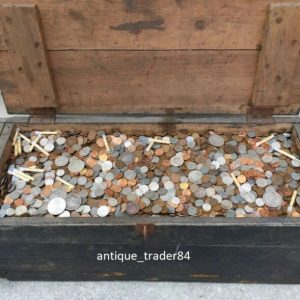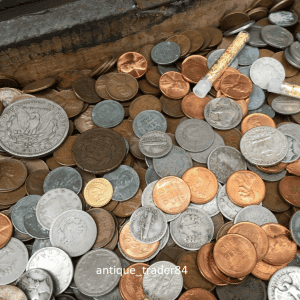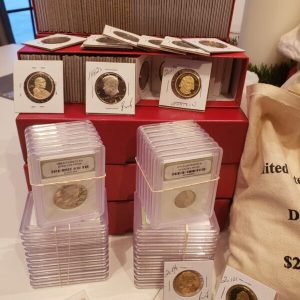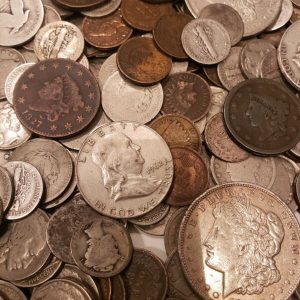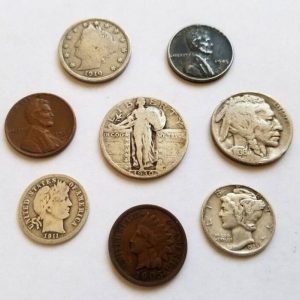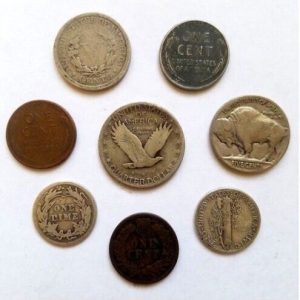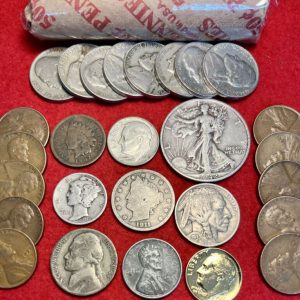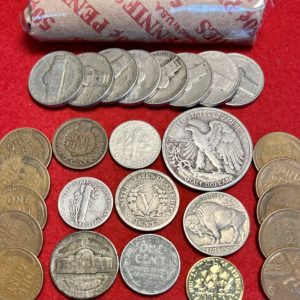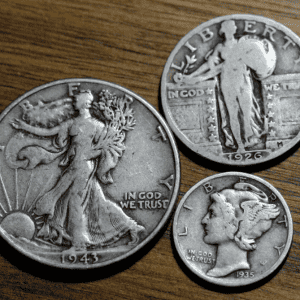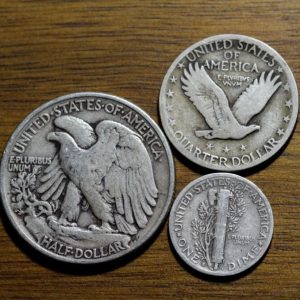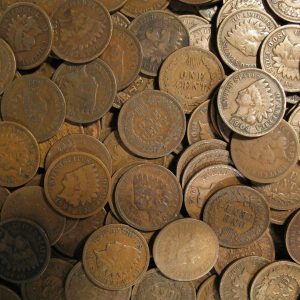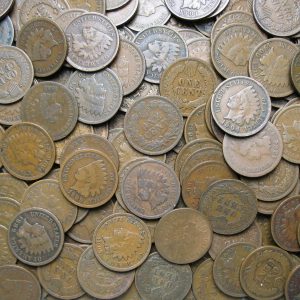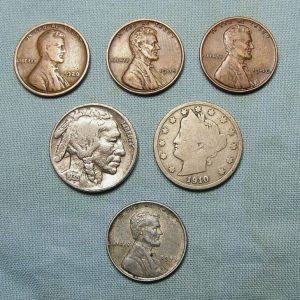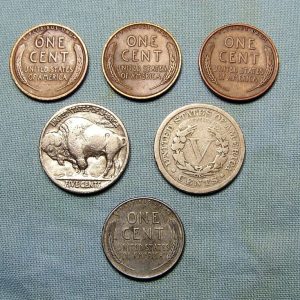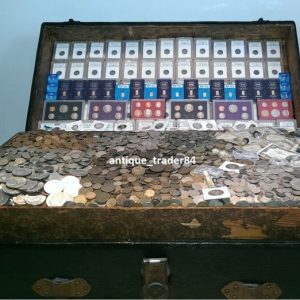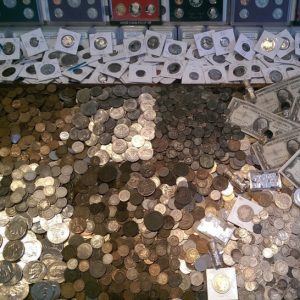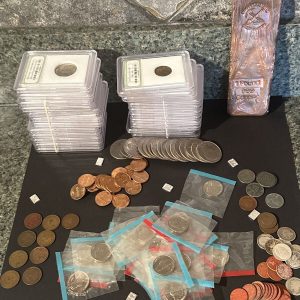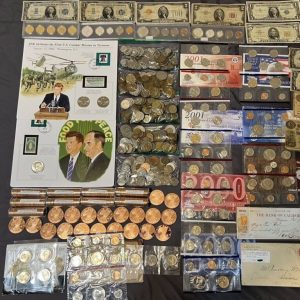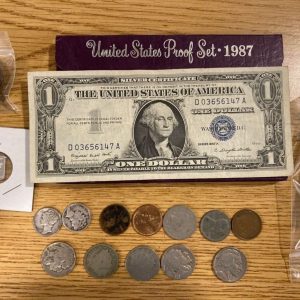Old coins can provide a fascinating glimpse into history. Their designs, materials, and varying conditions tell unique stories about the culture and events surrounding their origins. For collectors, old US coins offer the allure of rarities and precious metals alongside affordably priced specimens perfect for amateur numismatists.
If you’re short on time, here’s a quick answer to your question: Old US coins date back to the late 1700s and include iconic designs like the Indian Head cent, Buffalo nickel, Mercury dime, Morgan silver dollar, and others. Key tips for collectors are to research coins, set a budget, buy from reputable dealers, check pocket change, search rolls from banks, and attend shows/auctions.
In this comprehensive guide, we will explore the history, design, minting, and collecting of old US coins. We’ll cover popular types like large cents, Indian Head cents, Buffalo nickels, Mercury dimes, Standing Liberty quarters, Walking Liberty halves, Morgan dollars, and Peace dollars. You’ll learn how to identify, evaluate, and care for these vintage coins as well as where to find them.
History and Significance of Old US Coins
Origins of US Coinage
The first official coins minted by the United States government were produced in 1792 at the Philadelphia Mint. Early coins were made of precious metals like gold, silver and copper. The designs featured liberty symbols like the Flowing Hair dollar and Draped Bust quarter.
As the young nation grew, so did the need for more coins. New denominations were added, including the large cent in 1793, half dollar in 1794 and gold eagle in 1795. Coins promoted national pride through patriotic designs.
During the 1800s as the frontier expanded, private mints and gold rushes increased coin production. The California Gold Rush yielded large quantities of raw ore to mint more gold coins.
Shift from Precious Metals to Base Metals
In the mid-1800s, rising silver prices led the US Mint to reduce the precious metal content of coins. This resulted in the new small cent minted from copper-nickel starting in 1856.
The Coinage Act of 1873 eliminated silver from many coins, leaving mainly base metals. This shift made US coins more affordable to produce in large numbers.
While most old US coins contain heavy precious metals, many post-1873 issues are minted from more affordable metals like copper, nickel and copper-nickel.
Rise of the Modern Penny and Nickel
The popular Lincoln wheat cent replaced the Indian Head cent design beginning in 1909. This iconic penny is still produced today after over 100 years of minting.
Similarly, the Buffalo nickel with its distinct American bison design was first produced in 1913 and minted for over 25 years. This was the first US coin to feature a historic American figure.
These classic penny and nickel designs helped usher in themes of American history and culture on US coinage.
Commemorative Designs and Themes
Early US coins focused on patriotic symbols and portraits of Lady Liberty. But around the turn of the 20th century, themes expanded to honor important people, events, and ideals.
For example, the Standing Liberty quarter marked the country’s new spirit after entering World War I in 1916. The Washington quarter debuted in 1932 to commemorate the bicentennial of George Washington’s birth.
These commemoratives demonstrated the coins’ power to celebrate national heroes and milestones as well as communicate changing American identity and values.
Major Types of Old US Coins
Large Cents (1793-1857)
Early United States one cent coins were much larger and heavier than modern pennies. Large cents were made of pure copper and were about the size of a half dollar.
Popular types include the Draped Bust cent (1796-1807), Classic Head cent (1808–1814), Coronet cent (1816–1857) and Braided Hair cent (1839–1857). These feature profiles of Lady Liberty and changing depictions of her hair.
The large cent was replaced by the smaller Flying Eagle cent in 1857, which was then followed by the Indian Head cent in 1859.
Indian Head Cents (1859-1909)
The Indian Head cent, also known as the Buffalo cent, features a Native American portrayal on the obverse. This was the first non-liberty portrait on US coinage.
Designed by James B. Longacre, the Indian Head cent was minted from 1859 to 1909. It was made from an 88% copper and 12% nickel alloy, giving it a reddish-orange color.
Many dates and mint marks of this coin are scarce, making it popular with collectors. High grade specimens exhibiting original red color demand premium prices.
Buffalo Nickels (1913-1938)
Considered one of the most recognizable US coins, the Buffalo or Indian Head nickel was produced from 1913 to 1938.
The obverse features a right-facing portrait of a Native American, while the reverse depicts an American bison. Designed by James Earle Fraser, this was the first US coin with animal imagery.
While no major rarities exist, there are several lower mintage dates worth more to collectors, including the 1937-D 3-legged variety.
Mercury Dimes (1916-1945)
Minted from 1916 to 1945, the Mercury dime is also referred to as the Winged Liberty Head dime. It was designed by Adolph Weinman.
The obverse shows a portrait of Liberty wearing a winged Phrygian cap, leading to the “Mercury” nickname. It contained 90% silver and 10% copper, with a total weight of 2.5 grams.
Key dates in the Mercury dime series include the 1921 and 1921-D issues. High grade examples with full split bands on the reverse fasces command larger premiums.
Standing Liberty Quarters (1916-1930)
The Standing Liberty quarter was designed by Hermon A. MacNeil to mark America’s new spirit upon entering World War I in 1916.
The obverse featured a standing Liberty in a profile left view. In 1917, the obverse was revised to cover more of Liberty’s chest. It contains 90% silver and 10% copper.
Rare dates include the 1916 and the 1918/7-S overdate. High grade, fully struck examples with toned surfaces are prized by collectors.
Walking Liberty Half Dollars (1916-1947)
The Walking Liberty half dollar is acclaimed as one of the most beautiful US coin designs. Minted from 1916 to 1947, it was designed by Adolph A. Weinman.
The obverse depicts a full-length figure of Liberty striding towards the sunrise with arms outstretched. The reverse shows an American eagle perched on a rock ready for flight.
Key dates are the 1921 and 1921-D issues. Brilliant untoned examples with sharp strikes garner strong premiums.
Morgan Silver Dollars (1878-1921)
Morgan silver dollars are among the most extensively collected vintage US coins. They were struck from 1878 to 1904, and again in 1921.
The obverse features a profile portrait of Liberty designed by George T. Morgan. The reverse depicts an American bald eagle clutching arrows and an olive branch.
With many dates to collect over a long production span, the Morgan dollar offers variety for all budgets. Scarce issues like the 1893-S and 1895 proof excite advanced collectors.
Peace Dollars (1921-1935)
Following the Morgan dollar, the Peace dollar was minted from 1921 to 1935. It was designed by Anthony de Francisci.
The obverse features the head and neck of the Goddess of Liberty. The reverse shows an American bald eagle at rest clutching an olive branch, representing peace.
While less extensively collected than Morgan dollars, Peace dollars offer many affordable yet historic large silver coins for numismatists to treasure.
Tips for Collecting Old US Coins
How to Identify and Authenticate Coins
When starting a collection, learn how to identify and authenticate old US coins. Study basic coin anatomy, mint marks, and design details. Compare your coins to images in reference books or online guides.
Use a magnifying glass to look for signs of cleaning, damage, or alterations. Learn to recognize quality strikes and normal wear patterns. Familiarize yourself with common counterfeits and altered dates.
For extra assurance, have reputable dealers or third-party grading services authenticate and grade your coins. This provides a level of credibility for rare and valuable pieces.
Evaluating Coin Grades and Conditions
A coin’s grade significantly impacts its collector value. Evaluate each coin’s level of preservation, luster, marks, streaks, spots, etc. Compare it to photographic grading standards.
High grade examples (MS60 to MS70 or EF40 to AU58) will command much stronger premiums. However, lower grades can still be worth collecting if priced fairly.
Strike quality, eye appeal, and surface preservation also affect condition pricing. A beautifully toned coin may merit a higher value than a numeric grade alone reflects.
Caring for Your Coin Collection
Store coins in protective acrylic holders, albums, or archival cardboard/vinyl flips. Avoid PVC products which can interact with coin surfaces.
Keep your collection in a cool, dry place away from extreme temperature and humidity changes. Do not clean coins, which damages surfaces and reduces value.
Finally, maintain thorough inventory records, including purchase dates, certification numbers, grades, costs, and valuations for insurance purposes.
Building Your Collection on a Budget
Collect old US coins across varying price points. Less expensive, common date circulated coins provide an affordable entry point while you save up for pricier coins.
Consider building a type set rather than seeking every date of a series. Research affordable varieties, undervalued dates, and less-collected series.
Be patient and persistent in searching vendor inventory at shows, shops, or online for deals. Joining coin clubs can provide resources and relationships.
Where to Find Old US Coins
Check your pocket change and rolls from banks for potential finds. Search antique shops, flea markets, estate sales, and auctions.
Buy from reputable dealers at local coin shops or large-scale shows. Establish a relationship over time for access to special offerings.
Reputable online vendors provide high convenience and strong selection. Browse auction sites, dealer inventories, certified coins, and collector forums to locate coins.
Valuable Old US Coins
Key Date Coins
Key date coins have the lowest mintage figures within a coin series, making them more rare and valuable. Examples include the 1909-S VDB Lincoln cent, 1916-D Mercury dime, and 1921 Peace dollar.
These key dates are always in high demand from collectors looking to complete a series. Expect to pay significant premiums, especially for high grade specimens.
High Relief Coins
High relief coins exhibit extra depth and dimension in the central designs. Notable high relief issues include the 1907 Saint-Gaudens $20 double eagle and 2015 American Liberty silver medal.
Because of their more pronounced reliefs, high relief coins require specialized dies and minting care. This added effort increases their novelty and value to collectors and investors.
Condition Rarities
Condition rarities are coins that are not necessarily rare in lower grades but are very scarce in the highest grades. For example, an MS67 1892 Barber quarter or PR70 1880 Shield nickel.
Finding these coins in pristine shape is a challenge. When available, condition rarities achieve remarkable prices due to intense collector competition to own the finest.
Low Mintage Issues
Coins produced in smaller numbers tend to be worth more as their limited supplies cannot meet collector demand. Cases include the 1955 Double Die Lincoln cent and 1916 Mercury dime.
With populations under 100,000 or even 10,000, these low mintage coins remain prized acquisitions for series collectors and type set builders.
Frequently Asked Questions
What are the most valuable old US coins?
The most valuable old US coins include key date rarities like the 1794 Flowing Hair silver dollar and 1913 Liberty Head nickel, high grade condition rarities such as an MS68 1909-S VDB cent, and low mintage keys including the 1894-S Barber dime.
What is the best way to collect old US coins?
Focus on collecting affordable common dates, while saving up for pricier coins over time. Consider building a representative type set. Buy certified coins in the highest grades you can reasonably afford.
How do I know if my old coins are authentic?
Study your coins closely using good lighting and magnification to authenticate them. Compare to images in reference books or online guides. For very valuable coins, get opinions from multiple reputable dealers or have them certified by third-party grading services.
Where can I find old US coins for my collection?
Check pocket change and coin rolls from your bank. Search antique shops, flea markets, estate sales, and auctions. Establish relationships with reputable dealers. Buy coins online through dealer inventories and auction sites.

